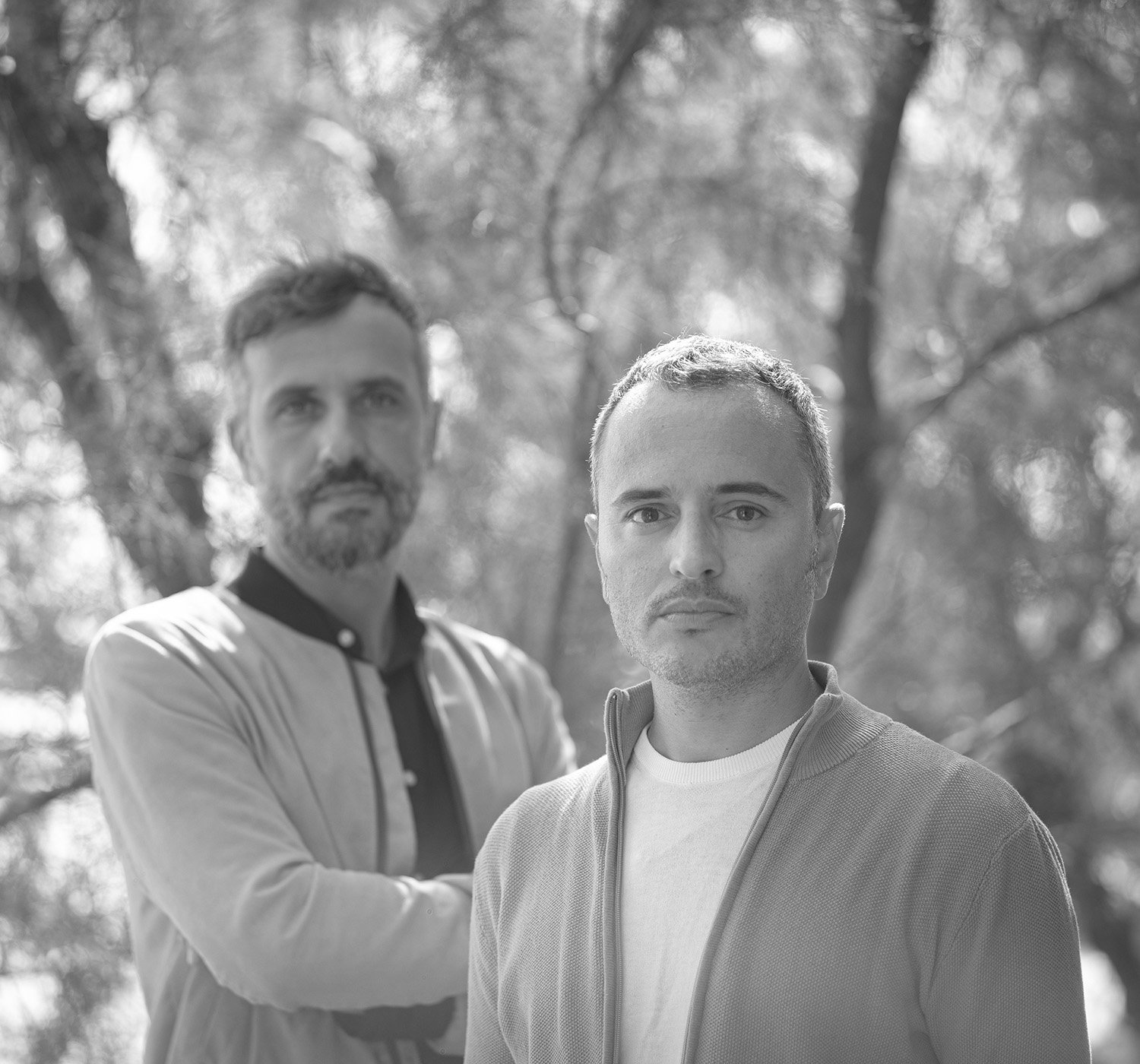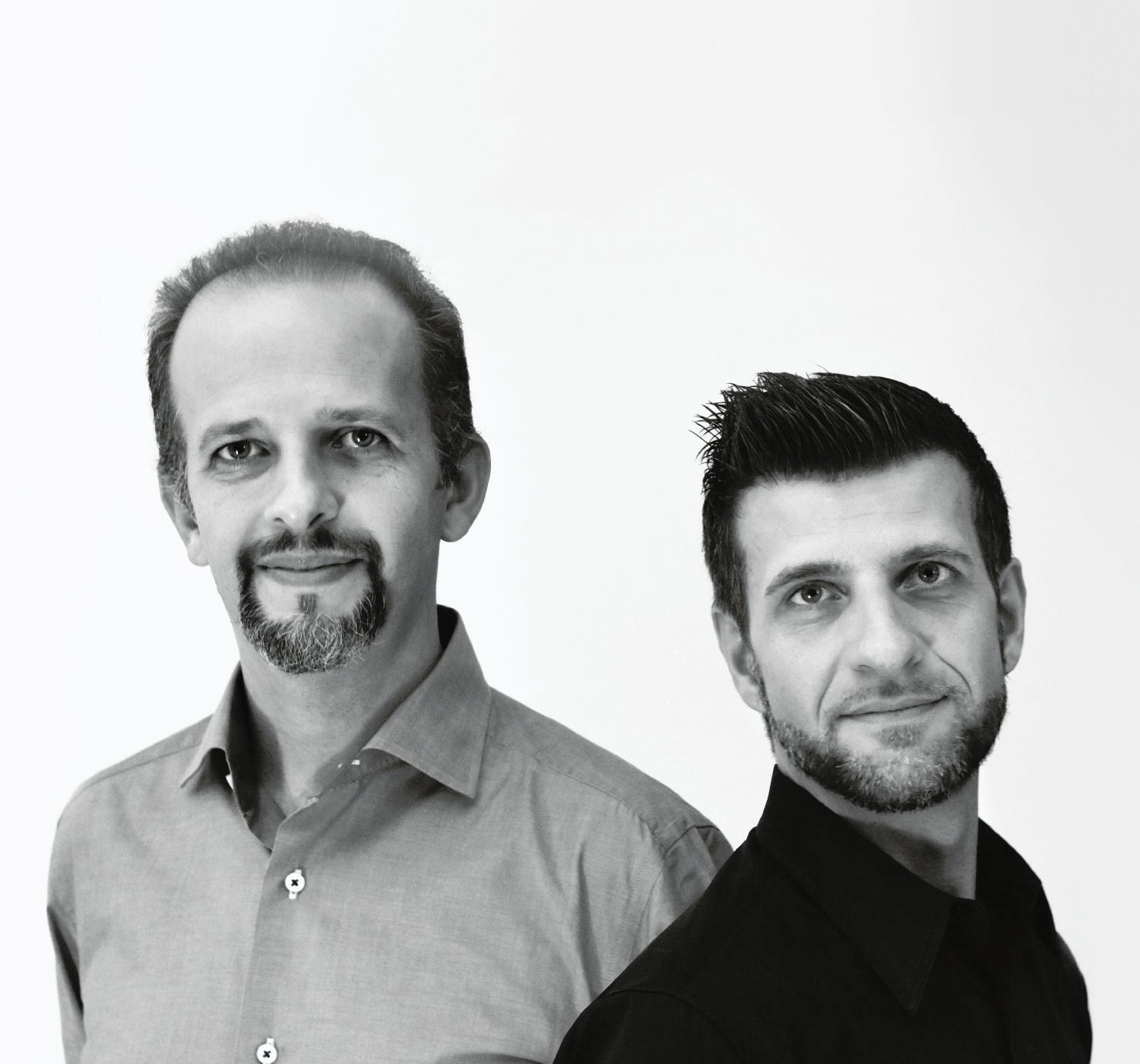Simplicity is the most complex thing in the world…
Ludovico (Vico) Magistretti was born in 1920 in Milan, Italy.
EDUCATION
CAREER
Here, in the small paternal studio, he would work for a lifetime with the collaboration of a single extraordinary character, the surveyor Franco Montella.
The 1950s
Between 1949 and 1959, in a Milan undergoing reconstruction, Magistretti designed and carried out about 14 projects for the INA-Casa in collaboration with other architects.
With Mario Tedeschi he participated in the QT8 collective venture with projects related to the houses for the veterans of Africa and the church of Santa Maria Nascente (1947-55).
In 1946 he participated in the exhibition of the R.I.M.A. (Italian Convention for Furniture Exhibitions), held at the Palazzo dell’Arte, with some small almost self-made furniture and then, in 1947 and 1948, with Castiglioni, Zanuso, Gardella, Albini and others, participated in the exhibitions organized by Fede Cheti, furniture fabrics creator, in his own atelier.
At the Milan Triennals, his participation in the VIII, IX (Gold Medal) and X editions (Grand Prize) was particularly important.
In 1960, for the XII edition, he curated the introductory hall of the exhibition “La casa e la scuola” with Ignazio Gardella and was a member of the executive board of the Milanese institution.
The 1950s were full of initiatives and innovative ideas by the young architect who, in a short time, confirmed himself as one of the most brilliant exponents of the “third generation”, thanks in part to the construction of two major buildings in Milan: the Torre al Parco in via Revere (1953-56, with Franco Longoni) and the office building in Corso Europa (1955-57).
In the following years, other projects of special importance would be added to these, including the towers of Piazzale Aquileia (1961-64), Bassetti house in Azzate (1960-62), Cassina house in Carimate (1964-65) and a house in Via Conservatorio in Milan (1963-66).
In 1956 he was one of the founding members of ADI, the Association for Industrial Design, and for the first time in the same year he was on the jury of the Compasso d’Oro Prize. In 1960 he was again among the jurors of the ADI prize.
The 1960s
From the 60s on, Magistretti’s attention to the theme of the house and living space would end up monopolizing his activity as an architect. This allowed him to develop an extremely expressive language that, although sometimes controversially criticized, would greatly influence the Lombard architectural culture of the period, making him one of the protagonists.
In this context his participation in the 1959 CIAM (International Congress of Modern Architecture) of Otterlo, in the Netherlands, where the Italians presented the BBPR Velasca Tower, the Olivetti canteen by Ignazio Gardella, the Arosio house in Arenzano by Vico Magistretti (1956-59) and the houses in Matera by Giancarlo De Carlo. These works caused a significant scandal and became in a sense the emblem of the deep crisis that hit CIAM in those years. Until that point it had been the undisputed protagonist of architectural debate, so much so that this congress of ’59 would end up being the last.
The project of the small house in Arenzano is what allowed Magistretti to find his own image, to discover his own language.
Magistretti is one of the fathers of so-called Italian Design, a phenomenon that he himself defines as “miraculous” and that could only occur thanks to the meeting of two essential components: architects and producers.
In the late 1960s he began to collaborate with exceptional producers, including Artemide, Cassina and Oluce, making objects for them that would become “classics” of contemporary production.
The 1970’s
In the following decade Magistretti’s architectural activity increased alongside his work as a designer.
The first product designed by Magistretti dates back to 1959/1960: the Carimate chair, designed to furnish the golf club designed by him in those years (1958-61) and produced by Cassina. In the following years, again for the same company, numerous other objects were added, the best known among which are the Maralunga sofa (1973, Compasso d’Oro award in 1979), the Sindbad sofa (1981) and the Veranda armchair (1983).
For Artemis he also designed a series of lamps including Mania (1963), Dalù (1966), Chimera (1969), the famous Eclisse (1967, Compasso d’Oro prize in the same year), Teti (1970) and Impiccato (1972).
For Vistosi he created Alega (1970), a retro-inspired lamp with a classic line conferred by the combination of the transparent base and the white diffuser.
Among his furniture, after the small Demetrio tables (1966), he designed the Selene chair (1969), which, with Panton Chair by Verner Panton and Universale by Joe Colombo, contends for the title of the world’s first plastic chair.
For many years Magistretti was also art director and main designer of Oluce, making an unmistakable impact on the company’s production. Among his masterpieces, icons recognized throughout the world, are the lamps: Snow (1974), Sonora (1976), especially Atoll (1977, Compasso d’Oro prize 1979), Pascal (1979) and Kuta (1980).
On the architecture side was the town hall of Cusano Milanino (1966-69), the Milan San Felice district in Segrate (1966-75, with Luigi Caccia Dominioni), and the house in Piazza San Marco (1969-71).


The 1980s
In the late 1970s, Magistretti began teaching at the Royal College of Art in London as a visiting professor and where he became an honorary member in 1983.
“The real enemy today is vulgarity. That’s why I love the Anglo-Saxon culture that is exempt from it”. Vico Magistretti’s love for Britain was reciprocated and in 1986 the architect was awarded with the longed-for Anglo-Saxon recognition: a gold medal from SIAD, Society of Industrial Artists and Designers.
It was here, at the Royal College of Art, that the minimalist school was formed. Its most refined exponents, Morrison and Grcic, were not only students of Magistretti but recognized him as an absolute reference for the development of what could be considered one of the most interesting contemporary movements in the field of design. Parallel to teaching abroad, in Italy he continued to work as an architect. Among his architectural works of the period are the headquarters of the Department of Biology in Milan (1978-81, with Franco Soro), the Tanimoto house in Tokyo (1985-86) and the Cavagnari Center of the Savings Bank in Parma (1983-85).
He also designed many interiors, which, far from having any decorative intent, were limited to creating spaces suitable for those who would live there and which could withstand the “natural insults of life. Because whoever lives in the house I designed has their own culture, history and taste”, said Magistretti who, once again, claimed his membership of the Modern Movement and distanced himself from any decorative intent and thus from Postmodernism.
At the end of the 1980s, an association with an exceptional publisher was also established: Maddalena De Padova, awarded the Compasso d ‘Oro for her career on the occasion of the 20th edition of the award. The jury declared: “Maddalena De Padova’s great commitment to the production and diffusion of design, as a common culture and as a comparison of different international environments, is a unique example of consistency and quality in our country”.
At the end of the 1970s, after the sale of the ICF brand with the Herman Miller production license, Maddalena created a line of furniture and objects under the De Padova brand (then called “De Padova”), on which great designers such as Achille Castiglioni and Dieter Rams collaborated, but the main contributor was Vico Magistretti.
The collection “è De Padova” designed by Magistretti includes the following among the classics: the Marocca chair (1987), the Vidun table (1987), the Silver chair (1989), the Uragano wicker chair (1992), the Incisa chair (1992) and the most recent, the Blossom table (2002).
The 1990s
If, on the architectural front, his projects in the 1990s were limited to the Famagosta depot for Metropolitana Milanese (1989-2001) and the Esselunga supermarket in Pantigliate (1997-2001), on the design front there were many objects designed by the architect that entered production.
In this context, the work of Vico Magistretti became increasingly different in relation to the several companies with which he established a collaboration that went beyond the design of the individual object.
For Flou he invented new types of beds, including, after the Nathalie bed (1978), the first fully padded bed (1993) in addition to another innovative bed, Tadao, whose base and headboard were a minimalist reinterpretation of the slatted structure.
Even in collaboration with Schiffini Furniture Kitchens, Magistretti wasn’t satisfied with traditional designs. With the Campiglia kitchen (1990) he moderated the use of wall units with the introduction of high cupboard-type furniture. With Solaro (1995), he transformed the traditional cupboard doors into large, practical drawers. With Cinqueterre (1999) he instead used an industrial semi-finished product, extruded corrugated aluminum sheets, which subtly highlighted each element.
The collaboration with Kartell finally produced another industrial chair – Maui (1996) – with a single plastic body, which, thanks to the international success it enjoyed, was just as acclaimed as the previous Selene chair.
In 1997, the Salone del Mobile in Milan dedicated a monographic exhibition to Vico Magistretti, next to that of Gio Ponti, curated by Vanni Pasca. The designers of the exhibition were Achille Castiglioni and Ferruccio Laviani.
It was a couple of years before the Compasso d’Oro Lifetime Achievement Award (1994).
The 2000s
At the end of the 90s another crucial professional relationship began, with Campeggi.
For Campeggi, Magistretti had the chance to subtly reinterpret some examples of the anonymous design tradition. This allowed him to create low-key objects reflecting his personality: the Kenia chair (1995), the Ospite bed (1996) and the Africa armchair (2000), all folding, as well as the Magellano sofa (2003). Some other objects, also designed for Campeggi, instead underwent a sort of expansion to transform their performance, such as the Extesa armchair (2000) and the Fan sofa (2007), the last product designed by the architect.
The last buildings Magistretti designed were a villa in Saint Barth in the French Antilles (2003-04) and one in Epalinges, near Lausanne (2006-10).
In 2003 the exhibition “Vico Magistretti. Design from the 1950s to the present” opened in the Palazzo Ducale in Genoa, created by the Schiffini Foundation.
In 2005 he received the special “Abitare il tempo” prize.
His works are on display in the permanent collection of the MoMA in New York, the Victoria & Albert Museum in London, the Die Neue Sammlung in Munich and in many other museums in America and Europe.
Following Magistretti’s death in September 2006, his studio, home of the Vico Magistretti Foundation, was converted to a museum dedicated to the study and propagation of his work.
AWARDS
1967 the Eclipse lamp, Artemis, won the Compasso d’Oro Award
1979 the Maralunga sofa, Cassina, won the Compasso d’Oro Award
1979 the Atoll lamp, OLuce, won the Compasso d’Oro Award
1986 the architect was awarded with the longed-for Anglo-Saxon recognition: the gold medal by SIAD, Society of Industrial Artists and Designers
1994 Magistretti won the Compasso d’Oro Lifetime Achievement Award
2005 He received the special “Abitare il tempo” prize.






© 2024 Vetreria Vistosi srl
Via Galileo Galilei, 9-9/A-11
31021 Mogliano Veneto – TV (Italy)
T. +39 041 5903480 / +39 041 5900170
Email: vistosi@vistosi.it
P.IVA IT02497840278
Company register 01808840266
REA registration number TV- 170728
Share Capital 100,000.00 €
© 2024 Vetreria Vistosi srl
Via Galileo Galilei,9-9/A-11
31021 Mogliano Veneto – TV (Italy)
T. +39 041 5903480 / +39 041 5900170
vistosi@vistosi.it
P.IVA IT02497840278